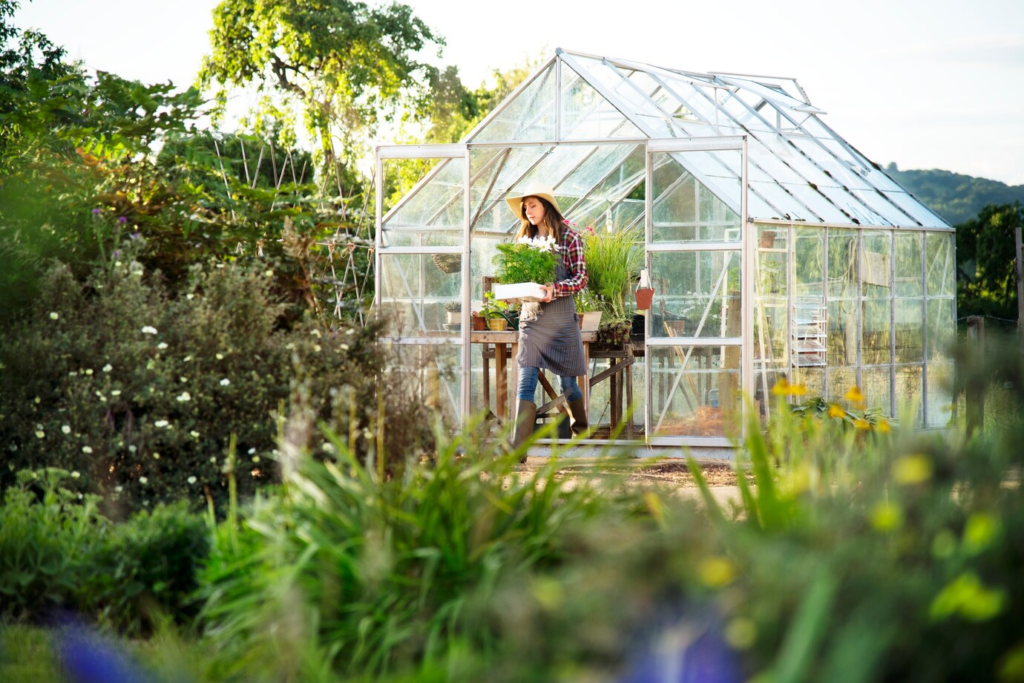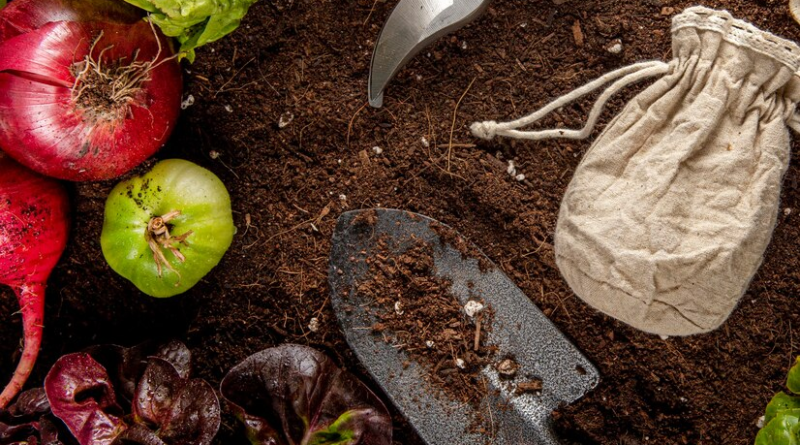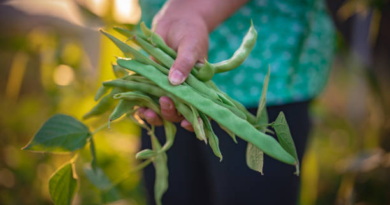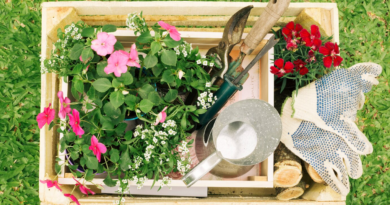September Allotment Tasks: A Complete Guide
As summer fades and the first hints of autumn appear, September becomes a pivotal month for allotment gardeners. The long, sun filled days of harvesting may be behind us, but this transitional period is just as important. It is a time to both savour the final rewards of summer and begin laying the foundations for a productive winter and an early spring.
September on the allotment is all about balance, enjoying late season crops while making practical preparations for the colder, slower months ahead. The soil is still warm enough to support new growth, making it an ideal time for sowing hardy vegetables, improving soil health, and tidying up after the peak growing season.
In this comprehensive guide, I will take you through the key tasks to focus on this month, from harvesting and planting to soil care, composting, and protecting your plot against the coming chill. Whether you are a seasoned grower or just finding your rhythm, these tips will help you make the most of this essential turning point in the gardening year.
Harvesting Late Summer and Early Autumn Crops
September is a busy harvesting month. The last of the summer crops are ripe and ready, while autumn vegetables are coming into their own. The focus is on picking regularly to prevent overripe fruits and vegetables and ensure you get the most out of your hard work.
Key Crops to Harvest in September:
- Tomatoes: Continue picking your tomatoes as they ripen. If the weather starts to cool significantly, consider bringing them indoors to ripen on a windowsill.
- Beans: French beans and runner beans are still productive in early September. Keep picking to encourage more growth until the plants slow down.
- Sweetcorn: Look for plump cobs with milky kernels. Sweetcorn is at its best just before the first frost, so keep an eye on the weather.
- Cucumbers, Courgettes, and Squashes: Harvest these regularly to prevent oversized, tough vegetables.
- Peppers and Chillies: Harvest these as they ripen. In cooler regions, consider moving pots inside to extend the growing season.
- Potatoes: If you haven’t already, dig up your maincrop potatoes. Store them in a dark, cool place.
- Pumpkins and Winter Squashes: These are ripening by late September. Wait until the skin is hard, then cut the stems and store them in a cool, dry area.

Sowing and Planting for Autumn and Winter
While the bulk of your summer planting is complete, September is the perfect time to sow crops that will grow through autumn and into winter. These vegetables are usually hardy and able to withstand cooler temperatures.
Vegetables to Sow in September:
- Winter Lettuce: Fast-growing varieties like ‘Arctic King’ or ‘Winter Density’ will provide salads well into winter.
- Spinach: Hardy varieties can be sown now for a continuous harvest through autumn.
- Spring Onions: These will overwinter and provide an early harvest in spring.
- Radishes: Quick-growing radishes can still be sown for an autumn crop.
- Turnips and Swedes: Ideal for sowing now to give you a winter harvest.
- Pak Choi and Asian Greens: These love cooler weather and will thrive in the autumn.
- Spring Cabbage: Sown now, they’ll be ready for harvesting next spring.
Vegetables to Plant in September:
- Onion Sets and Garlic: These crops need the cold weather to develop well. Plant garlic cloves and onion sets in well-drained soil.
- Winter Brassicas: If you have seedlings of kale, Brussels sprouts, and cabbages, now is the time to plant them out.
- Broad Beans: Sow broad beans in September for an early harvest next spring. Choose hardy varieties like ‘Aquadulce Claudia.’
Soil Care and Maintenance
As the growing season winds down, September is an ideal time to care for and improve your soil. After the summer crops are harvested, the soil can become depleted of nutrients. Good soil health is crucial for a productive allotment, and maintaining it will set you up for a successful growing season next year.
Key Soil Care Tasks for September:
- Composting: As you harvest crops and pull up spent plants, collect organic matter such as leaves, plant debris, and vegetable peelings to add to your compost heap. Turn the compost to aerate it and speed up the decomposition process.
- Green Manures: If you have empty beds, consider sowing green manures like mustard, clover, or ryegrass. These will improve soil structure, add organic matter, and help suppress weeds over the winter. Dig them in before they flower to avoid them going to seed.
- Mulching: Adding a layer of organic mulch, such as well-rotted manure or garden compost, around your perennial plants (like fruit trees and bushes) will help retain moisture, suppress weeds, and improve the soil.
- Clear Weeds: Before they have a chance to set seed, remove any weeds that are cropping up. September is the last chance to get on top of them before growth slows down in winter.
- Top Up Raised Beds: Raised beds tend to sink over time as organic matter breaks down. Top them up with fresh compost or well-rotted manure to prepare them for winter crops or to rest over winter.
Caring for Fruit Plants
September is the ideal month to give your fruit plants some attention. Whether you’re harvesting fruit or preparing plants for winter dormancy, proper care now will help ensure a good crop next year.
Fruit to Harvest in September:
- Apples and Pears: Most varieties of apples and pears are ready to harvest in September. Gently twist the fruit; if it comes away easily, it’s ripe.
- Plums and Damsons: These fruits are best harvested as they fully ripen, often throughout September.
- Autumn Raspberries and Blackberries: Pick these daily or every few days to enjoy them at their sweetest.
Tasks for Fruit Plants:
- Pruning: Now is the time to prune summer fruiting raspberries by cutting down old canes to ground level. Remove any dead or diseased branches from fruit trees. For apples and pears, focus on shaping the tree and removing overcrowded or crossing branches.
- Feeding and Mulching: Feed fruit bushes and trees with a balanced fertiliser. Apply a thick layer of mulch to protect roots from cold weather.
- Netting and Protection: Birds will be after your fruit crops, so use nets or mesh to protect them. Make sure the nets are secure and raised above the fruit to avoid any animals becoming trapped.

Preparing for Frosts
As the weather begins to cool, frost becomes a concern. While September is typically mild, it’s smart to be prepared for the first frost. Protecting your plants now will extend their growing season and ensure they survive into the colder months.
Frost Protection Tips:
- Fleece or Cloche Covers: For tender plants like tomatoes, peppers, or late-season cucumbers, use horticultural fleece or cloches to protect them from sudden temperature drops.
- Lift and Store: Lift tender crops like potatoes, pumpkins, and squashes before the first frost hits and store them in a cool, dry place.
- Move Potted Plants: If you have potted plants that are frost-sensitive, consider moving them into a greenhouse or an area sheltered from the cold.
Planning for Next Year
While the current season is wrapping up, September is an excellent time to start planning for the next growing season. Reflecting on what worked and what didn’t this year can help you improve your allotment management in the future.
Key Planning Tasks:
- Crop Rotation: Plan your crop rotation for next year to prevent the buildup of pests and diseases in the soil. Divide your plot into sections for legumes, brassicas, and root vegetables, and rotate them annually.
- Order Seeds and Bulbs: Now is the perfect time to browse seed catalogs and order bulbs for planting in autumn or early spring.
- Plan Raised Beds and Structures: If you’re thinking of adding new raised beds, tunnels, or trellises, start sketching out a layout and making a list of materials.
- Assess Successes and Failures: Take some time to assess this year’s harvest. Which crops performed well? Which struggled? Use this insight to make informed choices for next year’s planting.

Final Clean-Up and Organisation
A good tidy-up in September will help keep your allotment organised and ready for the months ahead. A clean, well-organised plot is easier to manage and reduces the risk of pests and diseases overwintering.
Key Clean-Up Tasks:
- Clean Greenhouses and Cold Frames: Remove dead plants, debris, and algae from your greenhouse and cold frames. Clean the glass to allow maximum light in during the shorter winter days.
- Tidy Sheds and Tool Storage: Clear out old tools, broken pots, and any clutter that’s accumulated. Sharpen and clean tools before storing them for winter.
- Remove and Store Supports: Take down plant supports, netting, and bamboo canes from crops like beans and peas. Store them away until next season.
- Prepare Water Butts: Ensure your water butts are cleaned and ready to capture autumn rainfall. Check for leaks and secure them in place for winter use.
September is a key time to make the most of your allotment and set the tone for the months ahead. While the pace of growth may be slowing, there is still plenty to do and everything you tackle now will have a lasting impact. From enjoying the final harvests of summer to sowing hardy autumn crops, enriching the soil, and tidying up your plot, each task plays a role in maintaining a healthy, productive allotment year round.
Taking the time to prepare your beds, protect vulnerable plants, and plan ahead will help ensure a smoother transition into autumn and winter. You might even find that some of the work you put in now pays off earlier than expected, with overwintered crops getting a strong head start once spring arrives.
So while the days may be getting shorter, there’s still a lot to gain. Embrace the slower rhythm of the season, stay consistent with your care, and your allotment will continue to reward you not just through autumn, but well into the next growing year.
Happy gardening, and here’s to a fruitful season ahead!




